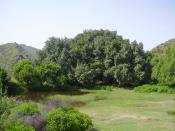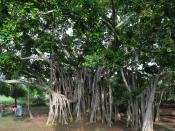Identity of Indian Emigrants
Hugh Tinker's The Banyan Tree is an intensely researched study of the enormous complexities behind the emigration of the citizens of India, Pakistan and Bangladesh. It is a survey of the Indian communities in foreign countries, in a broader scope, mainly relying on the author's knowledge of the Indian diaspora, supported by secondary sources for data. Tinker describes two distinct impressions about the status of Indian emigrants. One is that of exploiters who create Indian colonies in the land where they settle, and the other is of victims of circumstances who need to accept the dominance of the host country. The book evaluates themes like second-class citizenship, minorities, social and economic integration of Indian emigrants in various countries. This essay will investigate the notion of identity and how it defines Indian emigrants and their future generations on foreign soil.
Banyan tree, which is the national tree of India, starts its life as an epiphyte (a plant that grows on another plant) when its seeds grow in the cracks of a host tree (and sometimes on structures like buildings).
In his book, Tinker uses banyan tree as a metaphor for the Indians who emigrate from their motherland to form new societies abroad. Tinker quotes Rabindranath Tagore's excerpt about banyan trees where he says, "The civilization of India, like the banyan tree, has shed its beneficent shade away from its own birthplace.. India can live and grow by spreading abroad." This quote is a good summary of the theme Tinker uses to portray his arguments in the book. By grouping Indians by communities, Tinker provides a detailed analysis of the composition of the soil where the banyan tree grows, and recognizes each seed, nutrient, mineral, and most importantly, each source of blight of the Indian emigration. [1: Tinker.


